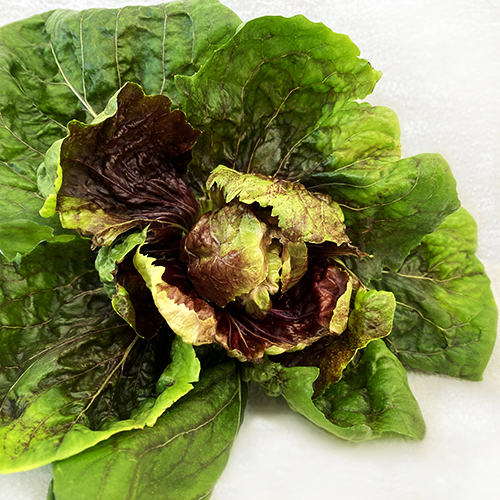Radicchio
Latin name: Cichorium intybus
🌱 Days to Sprout: 5-10
😋 Ready for Full Dose of plant food with true leaves or roots .5-inch long
✂️ Thin to: 1 plant per yCube
🍅 Days to Maturity: 65-75
💡 Light Zone: Medium or Low
📏 Plant Size: <1 ft
💚 Care Level: Intermediate
Origin
Radicchio dates to the 16th century and originates from the seaside Italian town of Chioggia, near Venice. Thus, the plant’s official name is Radicchio Rosso di Chioggia. Today, Italy is still the predominant producer of this leafy green, with France coming in second.
Qualities
Radicchio resembles red cabbage as it forms a small head with burgundy leaves on the inside and looser, greener leaves on the outside, but its leaves are smoother and much thinner than cabbage. Radicchio has a slightly bitter flavor with a very mild kick. It is low in calories and high in vitamin K and antioxidants.
Use
Radicchio can be enjoyed raw in salads or even used as a wrap, while cooking brings out the sweeter side of this vegetable. It Italy, Radicchio is often added to pasta dishes, risotto, soups, and stews, or simply grilled and dressed in some olive oil.
Care & Harvest
💡Temperature: Prefers cooler temperatures (60-70°F), but is a hybrid plant tolerant of warmer temperatures.
✂️ Pruning: Check the roots monthly and trim any that are brown or extending past the yPod.
🔎 Plant Health: Plants that form a head can be susceptible to tip burn, and while this variety of Radicchio is fairly resistant to this, cooler temperatures and a tank refresh can help if you notice it. Aphids are a common pest, but you can use our prevention tricks to keep pests at bay!
🥬 Harvest: For ongoing harvest, snip the outer leaves just above the base of the plant once they reach 4 inches tall to let the inner leaves continue to grow. Don't cut more than 1/3 of the plant if you want it to keep growing. For a one-time harvest and to get the inner head to develop, harvest when the head is about 3-4 inches in diameter and is a nice burgundy color. If left to grow the center head, the outer leaves may pull away from the head slightly, but they are still tasty! Harvest from the base.
Our Plant Health & Nutrition Team thoroughly tests each variety we offer to bring you the most flavorful and high-quality plants. We regularly rotate our plant portfolio, so please note, availability varies.

